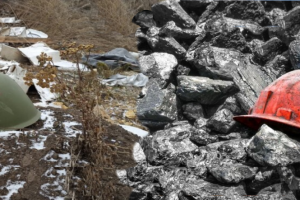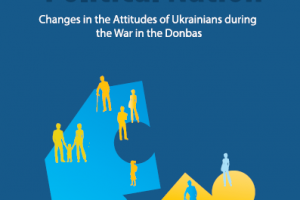 By Dmytro Babachanakh, Associate Analyst at the Ilko Kucheriv Democratic Initiatives Foundation
By Dmytro Babachanakh, Associate Analyst at the Ilko Kucheriv Democratic Initiatives Foundation
The war Kremlin started against Ukraine disrupts the global economy and endangers supply chains, which makes it the most effective countersanction by Russia
Much has been written about the sanctions democracies all over the world imposed on Russia following its attempted invasion of Ukraine. Most notably, these include the limitations on the Kremlin’s banking sector, import of technologies, the assets of oligarchs and civil servants, flights and aircraft services as well as a gradual refusal of the country’s energy sources.
On the other hand, the countersanctions introduced by Russia receive little attention. In fact, when asked about the sanctions, the White House press secretary Jen Psaki joked that “none of us are planning tourist trips to Russia, none of us have bank accounts that we won't be able to access.”
There is some merit to Psaki’s comment – most of the countersanctions listed by Russia’s Ernst & Young firm do not appear to have a strong effect on the global economy. Indeed, the majority of these measures regulate the functioning of the economy within Russia, rather than prohibit the supplies of certain goods from Russia to other states or limit the use of Russia’s infrastructure globally.
The Kremlin’s gamble to institute payments for Russian exports in rubles has similarly not panned out – not a real countersanction, it is rather a smokescreen for the domestic audience.
It so seems that the most obvious opportunity for Russia to introduce countersanctions lays in ceasing the export of energy resources, particularly to the European states, but that is not likely to happen. The revenue from these export operations remains the backbone of the Kremlin’s budget, and it would not voluntarily give up the opportunity to make record profits that are forecasted for this year.
However, the definition of the Kremlin’s countersanctions that only account for direct measures enacted by the Russian government is insufficient. Instead, one should understand countersanctions as actions by Russia that disrupt supply chains and production, which ultimately impact the economies of the states it aims to countersanction.
If this definition is applied, it is clear that the very act of Russia’s war against Ukraine emerges as the most prominent Russian countersanction. The war causes shortages of goods, particularly those that have been traditionally traded by Ukraine, and strains the budgets of democratic states.
One obvious example is the harvesting of wheat. This product has been an important part of Ukraine’s export – prior to the war, the country produced 11.5% of the global supply. Now, Russia is targeting Ukraine’s oil depots and refineries throughout the country, which allows it to achieve two goals at once: make the supplies of fuel for the Ukrainian army more difficult and disrupt the sowing of crops which requires fuel for the agricultural machinery. These actions have already contributed to a significant increase in wheat prices on the global markets. Most importantly, projections indicate that shortages of wheat are possible, which might cause hunger to millions around the world and contribute to shortages.
A similar situation emerges when it comes to other resources that are extracted in Ukraine, such as iron ore. One of the largest steel plants in the country and in Europe located in Mariupol has been “practically destroyed” by the Russian invaders. Another large Ukrainian steelmaking factory located in the city of Kryvyi Rih had been forced to shut down operations in March “in order to ensure the safety and security of our people and assets”, and only recently resumed operations. Since the beginning of the war, there has been a 13% increase in the price of iron ore.
The war also threatens the supply of uranium. At different points of the war, the Russians came close to less than 150 kilometers of Ukraine’s uranium facilities in Zhovti Vody, an important development given that Ukraine is a top-10 extractor of the material. It is not surprising that the price of uranium increased by a third since the war broke out.
Further, shipping in the Black Sea area has been disrupted by Russian warships with no intention of following the Ukrainian sailor’s advice and bombs that endanger shipments. These developments are already hurting global trade, and the negative effects of Russia’s actions will continue to mount.
This is by no means an exhaustive list of the economic damage Russia’s war has done to the global economy. However, even this brief overview highlights an important fact – war itself is Russia’s chief countersanction that allows it to damage the economies of the West.
Many democratic states have been hesitant to provide sufficient military assistance to Ukraine and disregard Russian countersanctions as ineffective. However, the economic effects of the war will become more and more difficult to ignore as prices soar and businesses suffer.
If not for the sake of Ukraine’s survival, democracies should increase military assistance to Ukraine for the sake of the global economy that is suffering from the war initiated by the Kremlin.








